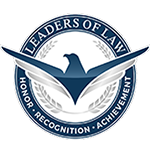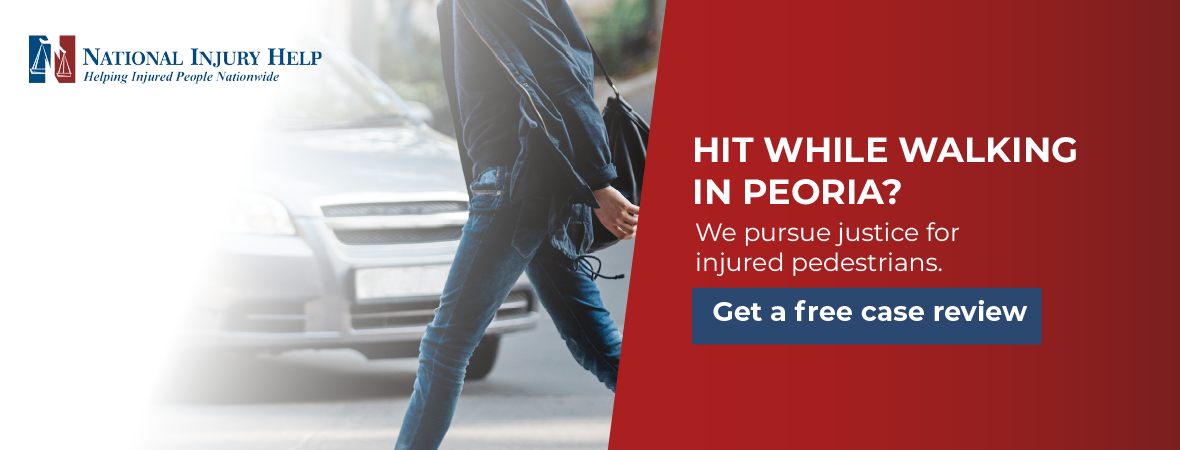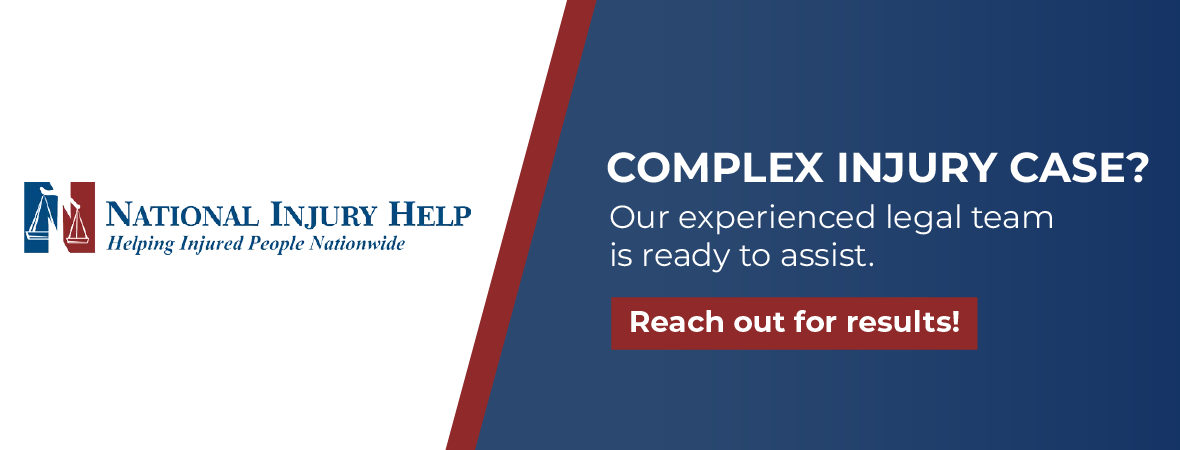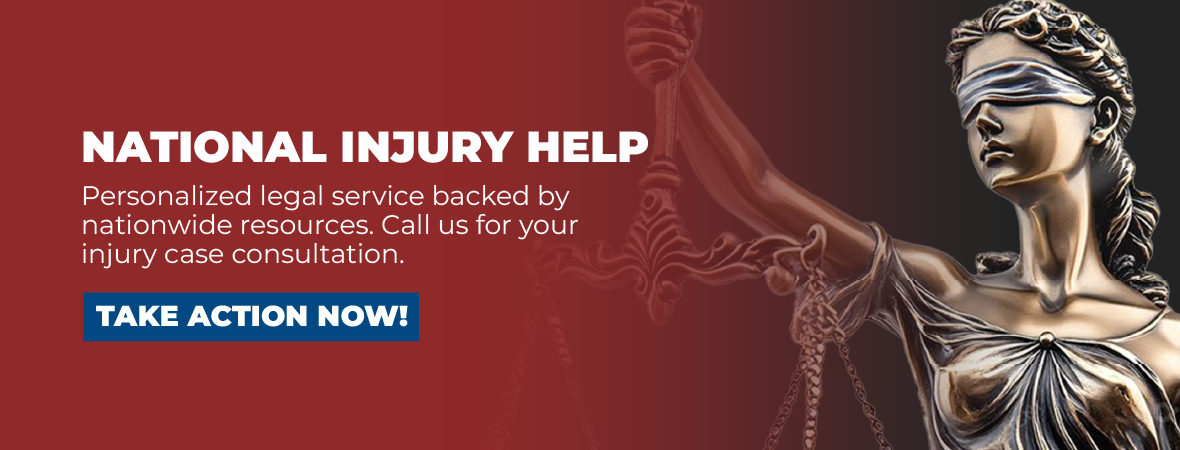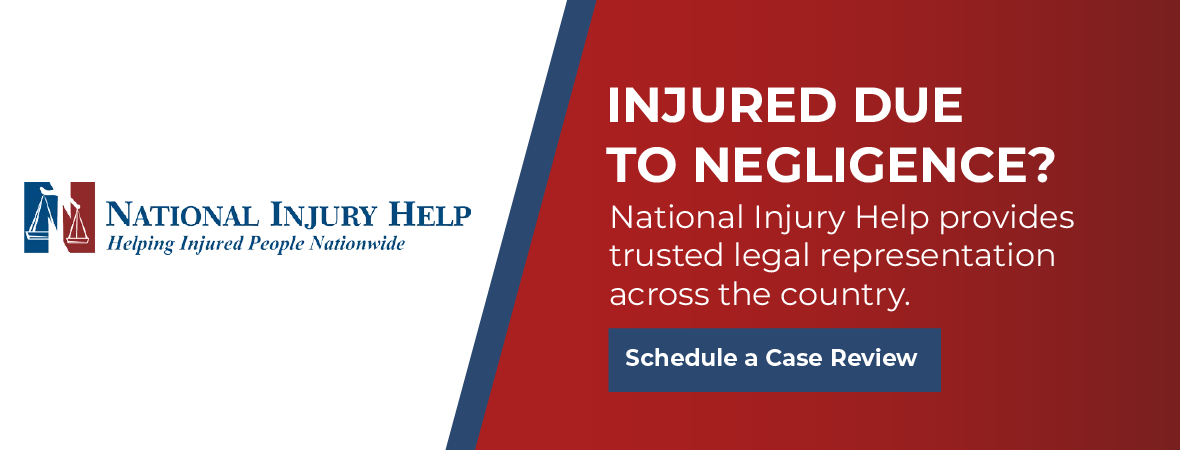Pedestrian accidents in Peoria can lead to serious injuries and financial issues. This article outlines your legal rights and how a pedestrian accident lawyer can help you get the compensation you deserve. Contact National Injury Help at 1 (800) 214-1010 for support and guidance throughout your recovery.
A peaceful walk along Bell Road can turn into chaos when a driver glances at a phone instead of the crosswalk signal. In a single moment, the sound of tires on pavement is replaced by the sound of sirens and worried voices. Pedestrian crashes cause some of the most devastating injuries our office sees because the human body has no shielding against a two-ton vehicle.
Broken bones, head trauma, and emotional scars often follow, and those injuries bring steep medical bills and time away from work. Arizona lawmakers know this reality and have written statutes that protect walkers by holding careless drivers fully accountable.
Insurance companies, however, do not rush to pay fair compensation. Adjusters quickly look for reasons to blame the person who was hit. They may claim you stepped into the road without looking or that dark clothing made you hard to see, even when the driver ran a red light.
These tactics can delay treatment, drain savings, and add stress to an already painful recovery. That is when local legal help becomes critical. A Peoria pedestrian accident lawyer understands how traffic patterns on Thunderbird Road differ from those on 83rd Avenue. A local lawyer also knows how Maricopa County jurors respond to evidence and how Arizona courts apply comparative negligence rules.
In this guide, you will learn why pedestrian crashes happen so often in our city, who may be held legally responsible, and which state laws shape your claim. We will describe common injuries, walk you through each step to take after a collision, and show the types of compensation available.
Finally, we will explain how our firm builds a case, deals with insurance companies, and fights for the full financial recovery you need. By the end, you will have a clear roadmap and the confidence that your rights can be protected.
Common Causes of Pedestrian Accidents, According to an Experienced Peoria Pedestrian Accident Lawyer
Before any legal claim begins, we must ask why the crash happened. Each root cause reveals evidence to collect and rules to enforce.
Distracted Driving
Phones have become pocket-sized billboards competing for every driver’s attention. One text message received at the wrong second can keep eyes off the road for the full length of a basketball court. Near intersections, a split-second distraction can erase the gap between a moving bumper and a person already in the crosswalk. Drivers who eat while steering, adjust music settings, or scroll social media all share the same risk. Dash-cam footage, phone records, and witness statements often prove distraction long after the driver denies it.
Failure to Yield at Crosswalks
Arizona law is clear: drivers must yield to pedestrians at marked crosswalks and at intersections without signals when walkers have the legal right to cross. Along Bell Road, Thunderbird Road, and 83rd Avenue, traffic gets busy, and drivers push to beat yellow lights. That urgency tempts many motorists to roll through turns or creep into the crosswalk while looking only for gaps in car traffic. Video from nearby businesses and timing reports from traffic signals can show that the driver never fully stopped as required.
Speeding and Aggressive Driving
A vehicle traveling forty miles per hour instead of the posted thirty miles per hour needs many more feet to come to a full stop. That added distance removes the time needed to see a person at the roadside and react safely. Aggressive maneuvers like sudden lane changes or rapid acceleration between lights also raise crash risk. Police speed calculations, skid mark measurements, and black box data downloaded from the vehicle give clear numbers that juries respect.
DUI or Impaired Driving
Late-night and weekend collisions in Peoria often involve alcohol, cannabis, or prescription medication that slows reaction time and blurs vision. An impaired driver may stray into bike lanes, drift over the stop line, or ignore signals altogether. Field sobriety results, blood alcohol readings, and body-cam footage demonstrate impairment even when the driver later claims the test was wrong.
Poor Visibility or Inadequate Signage
Some stretches of older roadway rely on streetlights spaced too far apart for clear sight. Crosswalk paint fades under the Arizona sun until it blends into the asphalt. A tree branch may block a stop sign. When a driver, already half focused on a navigation screen, finally looks up, the walker appears too late to avoid impact. Photos of lighting at the same hour, city maintenance logs, and complaints submitted by residents all help prove that poor visibility played a role.
Who Can Be Held Liable in a Pedestrian Accident
Legal responsibility often reaches beyond the person who sat behind the wheel. Identifying every liable party increases the pool of insurance money available for medical bills and lost wages.
Negligent Drivers
The most common defendant is the driver whose action or inaction broke a safety rule. Failing to yield, speeding, texting, or driving impaired each create liability under Arizona negligence standards. The driver’s personal insurance becomes the first fund we pursue.
Government Entities
City or county agencies maintain crosswalk signals, sidewalks, and streetlights. If a malfunctioning signal flashes green in all directions or a sidewalk heaves up and forces walkers into the road, the public entity may share fault. Claims against government bodies require special notices within six months of the incident, so rapid investigation is vital.
Commercial Drivers or Employers
Delivery vans, utility trucks, and rideshare vehicles travel in Peoria daily. When these drivers hit a pedestrian while performing work duties, their employers may be responsible. Commercial policies usually carry higher limits than personal policies, making them essential in severe injury cases.
Shared Fault Under Comparative Negligence
Arizona allows injured people to recover even when they share partial blame. If a jury finds you twenty percent at fault for crossing outside a crosswalk, the driver still owes eighty percent of your proven damages. Good evidence lowers your percentage and raises your final award.
Peoria Pedestrian Accident Lawyer Explains Arizona Pedestrian Laws That May Impact Your Claim
Every claim must rest on legal rules. Understanding these statutes prevents insurance companies from twisting them to deny payment.
Right-of-Way Rules
Arizona Revised Statutes sections 28-792 and 28-793 tell drivers to yield to pedestrians in marked crosswalks and in intersections without signals when walkers are on their side of the road. Drivers must also yield when turning on a green arrow if pedestrians are lawfully crossing with the walk signal. When a driver ignores these rules, liability becomes clear.
Jaywalking and Comparative Fault
Pedestrians must obey walk signals and avoid stepping into traffic that is too close to stop safely. Crossing mid-block where no crosswalk exists can reduce a claim. However, comparative negligence means you can still recover money as long as the driver holds some share of blame.
Reporting Requirements
Police must be notified of any crash that causes injury. Filing an official report gathers facts, witness lists, and initial fault opinions that help later negotiations. Drivers who flee the scene break both criminal and civil laws, opening options to pursue punitive damages or uninsured motorist coverage.
Statute of Limitations
Arizona sets a two-year deadline to file a personal injury lawsuit. A shorter six-month deadline applies to notice claims against government entities. Missing these dates usually ends the right to sue, so early legal advice is critical.
Common Injuries From Pedestrian Accidents
No metal frame protects a walker. When a car strikes flesh and bone, the results can be life-changing.
Traumatic Brain Injuries
A head can meet the hood, windshield, or pavement even at low speeds. Concussions sometimes clear within weeks, yet more severe TBIs cause memory loss, speech issues, and long-term cognitive decline. CT scans, neuropsychological tests, and testimony from neurologists document these invisible wounds.
Spinal Cord and Back Injuries
A sudden impact may fracture vertebrae or sever nerves, threatening partial or complete paralysis. Even less severe injuries can leave chronic pain that limits standing, bending, or lifting. MRI images and rehab logs show how the spine responds over time.
Fractures and Crush Injuries
A bumper typically strikes legs first, breaking tibias, femurs, or pelvis bones. Shoulders and arms may shatter when the body slides across the hood. Surgical plates, screws, and months in casts create high costs and long recovery periods.
Internal Bleeding or Organ Damage
An impact can rupture spleen tissue or tear the liver without obvious external signs. Internal bleeding demands emergency surgery and can complicate future health. Hospital operative reports tie these injuries directly to the crash event.
Emotional and Psychological Trauma
Long after bones knit, survivors may avoid crosswalks or freeze at the sound of tires on gravel. Post-traumatic stress, anxiety, and depression often require counseling, medication, and time away from crowds. Therapist notes and journals illustrate this less visible damage.
What to Do After a Pedestrian Accident in Peoria
A clear checklist reduces chaos and protects both your health and legal position.
Call 911 and Seek Medical Help
Always request paramedics even if the pain feels minor. Fast assessment can catch hidden internal injuries. Early records also stop insurers from claiming the crash did not cause later problems.
Get the Driver’s Information
Ask for name, phone number, insurance carrier, policy number, license plate, and driver’s license. If the driver refuses, note the plate and vehicle description and give it to the police.
Document the Scene
Take wide photos showing intersections and traffic signals, then take close shots of skid marks, broken glass, and injuries. Ask witnesses for names and phone numbers. Record the officer’s badge number and report number before leaving.
Avoid Statements to Insurance Adjusters
You may receive calls within hours. Provide only your name, contact information, and lawyer’s details. Even a polite apology can be used against you later.
Contact a Pedestrian Injury Attorney Promptly
Intersections in busy areas often have cameras that overwrite footage within days. A lawyer sends preservation letters, gathers traffic signal data, and hires experts while memories stay sharp.
What Compensation Can a Peoria Pedestrian Accident Victim Recover
A full claim seeks money for every way the crash disrupts life, both now and in the future.
Medical Bills
Emergency room care leads to surgery, rehabilitation, follow-up appointments, medication, and adaptive equipment like wheelchairs. Future procedures, such as joint replacements or nerve repair, should be included when doctors expect them.
Lost Wages and Earning Potential
Days off work translate into lost income. Severe injuries may force a career change or an early retirement. Economists compare your expected earnings path to new limitations and place a dollar figure on lifetime loss.
Pain and Suffering
Physical pain and emotional distress lack invoices yet carry real value recognized by Arizona courts. Testimony from family, friends, and mental health professionals illustrates daily struggles that numbers alone cannot show.
Permanent Disability or Disfigurement
Long-term mobility issues or visible scars change the ability to enjoy hobbies, care for family, and move freely. Life-care planners outline future assistance, home modifications, and projected costs for support services.
Punitive Damages
When a driver acts with extreme disregard, such as driving drunk at twice the legal limit, the court may award extra money to punish and deter. Although rare, these damages send a clear message and increase total recovery when evidence supports them.
How a Peoria Pedestrian Accident Lawyer Can Help You
Legal work after a pedestrian crash requires medical insight, technical evidence, and strong negotiation.
Build a Powerful Case by Proving Liability
In any pedestrian accident claim, the first task is to show who is at fault. This often requires detailed technical evidence and expert testimony. Your lawyer will:
- Collect traffic camera and surveillance video. Intersections and storefronts often have cameras that capture the accident. Watching the replay can reveal the driver’s behavior, signal timing, and blind spots.
- Download vehicle black box data. Modern cars record speed, brake usage, and steering inputs right before a crash. Black box data helps confirm whether the driver slowed, braked, or swerved.
- Review the intersection timing and layout. Traffic signals change quickly. If the driver sped through a yellow light or failed to yield on a turn, signal timing records show it precisely.
- Use accident reconstruction experts. Specialists can map the scene, where the pedestrian was walking, the vehicle’s path, angles of contact, stopping distance, and speed. Their testimony explains how the crash happened step by step.
- Interview witnesses. Bystanders often saw details the police missed. A lawyer finds them, takes recorded statements, and makes their words part of the official case.
When evidence lines up, video footage, technical data, expert analysis, and witness testimony, it becomes a powerful case. A judge or insurance company cannot easily cast doubt.
Protect You from Insurance Tactics
Insurance adjusters have templates designed to save money. After a pedestrian accident, they may:
- Argue that you were wearing dark clothes at night.
- Claim you were jaywalking or outside a crosswalk.
- Suggest your injuries are exaggerated or preexisting.
- Offer a fast, low-ball settlement while you still need treatment.
Your lawyer handles every step of the process:
- All calls, emails, and letters go through your counsel. This prevents admissions or misunderstandings.
- Claims against driver arguments. If they blame dark clothing, your team can perform light level calculations or check ambient lighting to prove visibility.
- Jaywalking lines. Intersections often have implied or unmarked crosswalks. Your attorney demonstrates legal pedestrian use and shows how vehicles still owe a duty of care.
- Medical defensiveness. If insurers say your injury is old, your lawyer brings in expert physicians to trace the new damage directly to the crash.
By keeping you out of phone calls and forcing adjusters to work through formal channels, your attorney reveals the full value of your case and prevents shortcuts that leave money on the table.
Maximize Compensation by Including All Damages
Recovering from a pedestrian crash isn’t just about treating broken bones. A good lawyer helps document every long-term cost:
- Orthopedic and neurology reports show fractures, joint damage, nerve pain, brain injury, or back damage.
- Psychological evaluation addresses PTSD, anxiety, or depression that may follow a violent event.
- Vocational experts assess how work options and earning potential may be limited by physical or cognitive impairment.
- Life-care planners forecast future needs: physical therapy, in-home support, mobility equipment, or medication.
Your legal team gathers documented proof of each cost. Then they organize testimony and supporting documents for adjusters or juries to see why your claim carries both immediate expenses and real future needs.
Guide the Claim from Settlement to Trial
Most pedestrian accident cases settle after the other side sees all the evidence lining up. But it often takes a well-prepared claim to shake insurance companies loose.
- Initial Negotiation: Your lawyer submits a formal demand letter complete with medical records, expert reports, and photographs. They set deadlines and convey the firm’s readiness to take the case further.
- Continuing Response: If insurers ask for more evidence or issue low offers, your attorney pushes back with legal arguments, expert opinions, and evidence to support full value.
- Filing Suit: When negotiations stall, the next step is filing a lawsuit in Maricopa County Superior Court. Once in court, the case enters discovery, which includes:
- Written questions (interrogatories)
- Document sharing, records, policies, correspondence
- Depositions, formal interviews taken under oath from the driver, witnesses, and medical providers
- Mediation or Settlement Conferences: Before trial, courts may require mediation, which offers one more chance to reach an agreement. With strong evidence and depositions in hand, your lawyer can push for a fair settlement.
- Trial: If the insurer refuses to offer full compensation, your attorney presents your story to a jury in court, through direct testimony, expert opinions, medical records, and persuasive visual exhibits. Trials are not taken lightly. Their purpose is often to prompt serious offers from the defense.
Provide Support with a Contingency Fee Arrangement
Most pedestrian accident attorneys operate on contingency. That means:
- You owe nothing upfront.
- Your legal costs, filing fees, expert fees, and deposition charges are covered by the law firm.
- The attorney gets paid only if you win money in a settlement or at trial.
- If the lawsuit fails or you take no money, you still pay no fees.
This structure aligns the attorney’s incentives with your own. Their goal is to win the highest compensation possible, and you never face financial risks during recovery or uncertainty.
FAQs About Pedestrian Accident Claims in Arizona
Can you sue if you were hit while jaywalking?
Yes, you can sue if you were hit while jaywalking. Arizona comparative fault rules allow recovery reduced by your share of blame.
What if you were partially at fault?
Yes, you can still receive compensation even if you were partially at fault. Arizona’s comparative negligence rule allows you to receive compensation, although the amount may be lowered.
Does insurance cover hit-and-run accidents?
Uninsured motorist coverage on your own policy often applies. Police investigations and witness statements help identify the driver when possible.
How long will a claim take to settle?
Minor injuries may resolve in months. Complex cases with surgery or permanent disability can run twelve to eighteen months, especially if a trial becomes necessary.
What if the at-fault driver was uninsured?
You may pursue your own uninsured motorist coverage and any other liable parties, such as vehicle owners or employers.
Speak With a Peoria Pedestrian Accident Attorney
Being hit by a car in Peoria while walking is a terrifying experience that can lead to serious injuries, emotional trauma, and long-term consequences. If you or someone you love was injured in a pedestrian accident in Peoria, you do not have to face the legal process alone. The team at National Injury Help is here to provide experienced, compassionate support.
Pedestrian accidents often involve complex questions about fault, visibility, and traffic law. Was the driver speeding? Did the crosswalk have proper signage? Were distractions or impairment involved? These are the types of questions we investigate right away. Our team works quickly to gather surveillance footage, witness statements, and police reports while the details are still fresh.
You should not be left with medical bills, lost wages, and pain because of someone else’s carelessness. At National Injury Help, we fight to recover the full compensation you are entitled to. We handle every part of your claim so you can focus on healing.
We offer free consultations and never charge any legal fees unless we win your case. Whether the accident happened near a school zone, a busy intersection, or a quiet neighborhood street in Peoria, we are ready to help.
If you’ve suffered a crosswalk injury in Peoria, call us today at 1-800-214-1010 to speak with a dedicated pedestrian accident attorney. We will explain your rights, answer your questions, and begin building a strong case from day one. You do not have to go through this alone. Let us help you take the next step forward.


